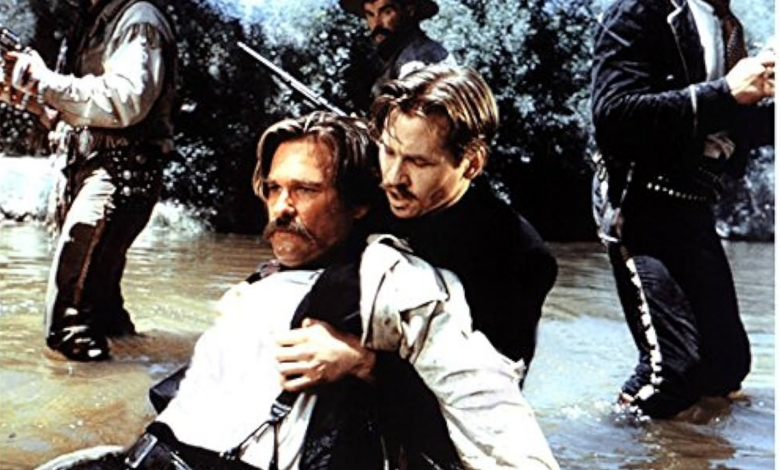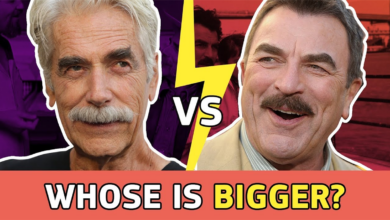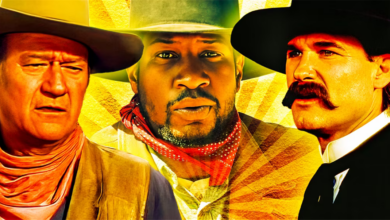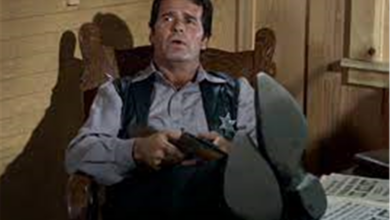
The dramatic storyline in Tombstone may seem pulled straight from a Ned Buntline dime novel, but its script was more focused on historical truths than you might expect.
With its steely-eyed showdowns, red-sashed antagonists, quirky characters and rolling subplots, Tombstone has all the makings of a good western tale. As a bonus, the storyline is more or less based on real events that took place in southeastern Arizona in the early 1880s.
In 1877, prospector Ed Schieffelin went out into the hills of southern Arizona intent on finding silver, despite warnings from literally everyone around him. He eventually found it without being killed by local Apache groups or succumbing to the brutal heat of the southwest.

In short order, his mining claim spawned others in the area, and eventually, the boomtown of Tombstone, which quickly gained a reputation for being a dope place to mine and gamble and vibe out in the desert.
Almost just as quickly, Tombstone became known for being home of one of the most infamous showdowns in the west. The gunfight at the O.K. Corral soon took on a life of its own, where fact, fiction and bias intertwined to create one of the most compelling tales of the western frontier.
Was Tombstone based on a true story?
Short answer: yes.
Tombstone is based on a true story that centers around the Earp brothers, Doc Holliday, and the cowboys of Cochise County, including Ike Clanton, Curly Bill Brocius, Johnny Ringo and others (see the Tombstone cast for more).
Although it takes some creative liberties as all films do, Tombstone largely follows the events before, during and after the gunfight at the O.K. Corral with some degree of historical accuracy.
That said, it’s a work of fiction, though the late screenwriter Kevin Jarre did place a heavy emphasis on making the film as authentic as possible. In fact, his adherence to the style and setup he wanted in Tombstone ultimately led to his firing when filming fell too far behind schedule.
Fortunately for western fans everywhere, George P. Cosmatos came in, and with the (big) help of Kurt Russell, the film was completed and ultimately went down as one of the best western films of the ’90s, along with Unforgiven and The Quick and the Dead, all of which were influenced by the best Spaghetti Westerns of the ’60s and ’70s.
13 Things That Weren’t Accurate in Tombstone
But as much as Tombstone gets the general story of the O.K. Corral gunfight right, there are some elements of the story that were changed in order to make it more Hollywood-friendly.
Here’s a look at 13 differences between the movie and the real historical events that took place in Tombstone.
1. The Earps arrived in Tombstone earlier than the movie suggests.
The Earp gang arrived in Tombstone in December 1879, nearly two full years before the gunfight at the O.K. Corral. That timeline’s understandably condensed in the movie, but in real life the Earps had more time — and more run-ins — to understand how the cowboys were affecting Tombstone and southern Arizona.
They also arrived in different circumstances. The initial crew included Virgil Earp and Allie, who moved down from Prescott, Wyatt and Mattie, who came over from Dodge City, and Jim and Bessie, who get no love in Tombstone whatsoever.

That’s because Jim was a barkeep and left law enforcement to the other Earps. Basically he said: nah, I’m good, so the movie left him out.
Morgan Earp would arrive in the summer of 1880, after things were looking decent for the Earp fam, and Doc Holliday would arrive in September of that year, flush with cash from his dealings in Prescott. Warren, the youngest Earp, would also head out to Tombstone, and was part of the Vendetta Ride following Morgan’s murder.
So many Earps.
2. Cochise County didn’t exist when the Earps rolled into town.
Just as the Earp clan rides into Tombstone, Johnny Behan introduces himself as Cochise County sheriff. He would eventually fill that position, but in real life, Tombstone was still part of Pima County when the Earps arrived at the end of 1879.
That might not seem like a major issue, except that Behan and Wyatt competed, at least for a short time, for the Cochise County sheriff position in 1880, after both men had been established in Tombstone.

Though Wyatt would’ve made an ideal candidate — he had been a Pima County undersheriff for several months — Behan had stronger political ties, and was nearly guaranteed to receive the new sheriff position. Behan knew this, and made a promise to Wyatt that he would make the stoic Earp brother an undersheriff in Cochise County if Wyatt agreed to drop out of the race.
Wyatt did, but Behan failed to hold up his end of the bargain, instead electing fellow Democrat Harry Woods as Cochise County undersheriff in the spring of 1881. Behan and the Earps never really got along, but as the year developed it was clear Behan’s political commitments to the Democrats and cowboys of southern Arizona would pit him directly against the Earps and their view of the law.
3. The Bird Cage Theater wasn’t around before the O.K. Corral gunfight.
Tombstone locals had plenty of rowdy entertainment in the early 1880s, but the Bird Cage Theater wasn’t established until December 1881, a few months after the infamous shootout.

The type of performance Josephine Marcus and Mr. Fabian put on in front of a packed house would’ve likely taken place at Schieffelin Hall, an impressive theater built in June 1881 and named after Tombstone’s founder.
Jarre’s original idea was to include a performance at Schieffelin Hall, but he swapped in the Bird Cage Theater after a visit to Tombstone in the early ’90s, wrote John Farkis in The Making of Tombstone.
4. Tombstone marshal Fred White wasn’t old when he was killed — he was in his thirties.
In the movie, marshal Fred White is played by Harry Carey Jr., who was in his seventies at the time of filming. But the real Fred White was in his early thirties when he was killed by Curly Bill Brocius in the streets of Tombstone.
On the night of October 28, 1880 — a year before the shootout — White responded to several cowboys firing their weapons in town, and when he attempted to disarm Brocius, the cowboy’s .45 Colt fired and shot White in the groin.

Wyatt Earp witnessed the shooting, and quickly helped apprehend Curly Bill. But as much as it looked like a cold-blooded murder in the streets, Curly Bill, Wyatt and even Fred White himself would at various times testify that it appeared to be an accident. Eventually, the charge against Brocius would be dismissed as an “accidental homicide.”
In reality, Fred White was a somewhat inexperienced town marshal, though he had the respect of local cowboys and town merchants alike. He didn’t have warring interests with anyone, as the Earps and cowboys did, so he was a generally likeable marshal and was even on good terms with Curly Bill before White’s death.

Tombstone’s portrayal of Fred White as a slightly ineffective old dude likely had more to do with paying tribute to Harry Carey Jr. and western productions of yesteryear. Carey had been in tons of old-school westerns back in the day, including John Ford productions like The Searchers and Cheyenne Autumn.
“Although he wasn’t the first choice to play the part of Marshal Fred White, Carey bridged the Western genre between John Ford’s My Darling Clementine and Tombstone,” wrote Farkis in The Making of Tombstone.
5. The cowboys were a real presence, but they weren’t one cohesive gang.
When the Texas Rangers began tackling their outlaw problem as early as the 1830s, it pushed a bunch of bandits, rustlers and other ne’er-do-wells farther west. These outcasts were eventually known as “cowboys,” a derogatory term for rustlers and the like, and by the 1870s they had found a safe haven in the still-wild lands of New Mexico and Arizona.
“No state or territorial troops like the Texas Rangers should be lurking. Cattle had to be part of the equation; rustlers couldn’t make a living without beef to steal and sell. Towns with saloons and card games and prostitutes were necessary. The outlaws might not mind living rough most of the time, but they also wanted to indulge their hedonistic tendencies.”
The Last Gunfight: The Real Story of the Shootout at the O.K. Corral — And How It Changed the American West, Jeff Guinn
Areas like southern Arizona were particularly attractive to the cowboys, who would venture down into Mexico, steal cattle, and sell it off to cooperative ranchers and butchers in Arizona and New Mexico. A network of cattle rusting ranches connected the southwest, and included ‘boys like Curly Bill, Johnny Ringo, the Clantons and McLaurys, and even associates of infamous outlaws like Jesse Evans and Billy the Kid.

The exact number of cowboys in the region was never known, but estimates ranged from a few dozen to several hundred cowboys at any given time. But unlike in the movie, the cowboys were hardly a cohesive unit.
“In common myth, such frontier freebooters hid out together in isolated mountain camps and swooped down to rob and kill,” wrote John Boessenecker in Ride the Devil’s Herd. “In fact, most western outlaws toiled in honest labor, then banded together from time to time to make a raid before returning to their homes and their jobs.”
They didn’t wear red sashes, and they didn’t always plan everything out together — the cowboys simply worked together to achieve common goals when it made sense. And often, those goals included stealing cattle, robbing stagecoaches and causing general mayhem.
6. The Earps didn’t avoid being lawmen in Tombstone.
Tombstone relies on a classic I’m never going back character arc for Wyatt Earp, but the truth is that the Earps arrived in Tombstone already tied to the law. In fact, Virgil was named a deputy U.S. marshal by U.S. Marshal Crawley Dake before they even arrived in Tombstone, thanks to Virgil’s experience as constable in Prescott.
And although they had other interests — gambling, riding as shotgun messengers, mining — Wyatt and Morgan were regularly deputized to help Virgil deal with shenanigans around southeastern Arizona.

In July 1880, for example, Virgil made Wyatt and Morgan special deputies in their search for mules stolen from nearby Camp Rucker. The mules were eventually found at the McLaury ranch, which helped kickstart the feud between the Earps and cowboys over the following year.
That same month, Pima County sheriff Charlie Shibell made Wyatt a deputy sheriff for the Tombstone area, where he helped Fred White keep order in town. He held the position until November, when he resigned in order to focus on grabbing the upcoming Cochise County sheriff position, which eventually went to Johnny Behan.
7. The shootout was the result of a fizzled back-alley deal and Ike Clanton’s ongoing threats.
A night before the shootout in Tombstone, Doc Holliday and Ike Clanton get into it after Clanton accuses Holliday of cheating. They really did tussle the night before the fight, but there was more to the story than the movie revealed.
On March 15, 1881, a stagecoach traveling between Tombstone and Benson was held up, and two people — driver Bud Philpott and passenger Peter Roerig — were killed. It was assumed the cowboys were behind the holdup, and eventually it came out that three cowboys in particular were responsible: Billy Leonard, Jimmy Crane and Harry Head.
The three murderous amigos escaped into New Mexico, and by summer Wyatt Earp concocted a plan that would serve two purposes: it would bring in the bandits, and improve Wyatt’s political standings in town.

One night, Wyatt met up with Ike Clanton, Joe Hill and Frank McLaury, and offered them the reward money for Leonard, Crane and Head — $1,200 for each. All they had to do was lure the cowboys into town, and the Earps would take it from there. After Wyatt confirmed via telegram in June that the outlaws could be delivered dead or alive, Clanton allegedly agreed to the deal.
“When it [the telegram] was produced, they agreed to the deal and said Hill would go to Eureka, New Mexico, to lure the robbers back to Arizona, near the McLaury ranch about thirty miles from Tombstone. Clanton and McLaury would tell the robbers a paymaster would be going from Tombstone to Bisbee to pay off the miners, and they wanted them to come and take it.”
Wyatt Earp: The Life Behind the Legend, Casey Tefertiller
As luck would have it, the three outlaws were killed in separate incidents — good times being a cowboy — so the deal fell through. But Ike Clanton was afraid that Wyatt had told others of their scheme, including Doc Holliday and Wells, Fargo agent Marshall Williams. Wyatt claimed he didn’t, but that Williams knew something was up because of the telegram. Ike didn’t believe it, and knew that if his crew found out about the deal, Ike was as good as dead for giving up fellow rustlers.
For the next few months, Ike made continual threats against the Earps and Doc Holliday, and on the night of October 25, those threats were as specific and menacing as ever. When Ike was drunk, armed and still making threats the morning of October 26, it would eventually lead to the O.K. Corral gunfight.
8. The real shootout lasted about 30 seconds, unlike the movie’s 90-second showdown.
Tombstone is a relatively accurate movie, but it’s still a movie that needs dramatic scenes and all the things that make moviegoers gasp in amazement. So it’s not surprising the movie’s version of the showdown is extended for maximum drama.
In real life, the shootout lasted some half a minute and included about 30 shots fired. The lawmen and cowboys were in close range and much of the firing started at the same time, so there’s never been an exact account of who fired first and who shot who exactly, but there are reliable narratives describing how quickly it started, and was then over.
“Frank and Wyatt each reached for and cocked his gun, while Billy Clanton, his view of Frank blocked by Frank’s horse, could only see Wyatt reaching into his coat pocket and believed that the Earps were starting to shoot and he needed to do the same. The hammers on Frank’s, Billy’s, and Wyatt’s guns all clicked back and Wyatt’s gun came out smoothly and fast because it didn’t snag on the canvas pocket in his coat.”
The Last Gunfight, Jeff Guinn
Kevin Jarre did an admirable job of keeping the movie’s duel somewhat realistic, aside from its length, and the fight plays out similar to accounts you’ll read in The Last Gunfight and Tombstone: The Earp Brothers, Doc Holliday, and the Vendetta Ride from Hell.
One notable difference: when Frank McLaury thinks he has Doc Holliday dead to rights at the end of the actual fight, he’s able to fire off a shot that grazes Doc’s hip before being shot by Morgan Earp.
9. Ike Clanton didn’t fire any shots during the shootout.
Just after throwing himself at the mercy of Wyatt Earp in Tombstone, Ike Clanton retreats to C.S. Fly’s photography studio to fire off some shots through broken glass.
In reality, Ike’s cowardice was even more pronounced: he ran from the fight and didn’t stop until he was two blocks away, on Toughnut street. Ike was arguably the party most responsible for causing the O.K. Corral gunfight, and was the first to turn tail and run when it finally came to pass.
His brother, 19-year-old Billy Clanton, would die from multiple gunshot wounds shortly after the fight ended.
10. Virgil and Morgan Earp weren’t shot on the same night.
Most of the historical inaccuracies in Tombstone are related to the timeline of events, and in this case, the film lumped together the attempted assassination of Virgil and the murder of Morgan.
In reality, the gunfight took place on October 26, 1881, and Virgil’s assassination attempt didn’t occur until December 28, some two months later. Aside from Ike Clanton’s hat being found at the scene of the ambush, there was no strong evidence proving who shot Virgil, so there were no convictions, and Virgil eventually left the territory to recover in California.

Nearly three months later, on March 18, 1882, Morgan was shot and killed at Campbell & Hatch’s Saloon and Billiard Parlor, not far from where Virgil was ambushed. But unlike Virgil, Morgan succumbed to his injuries and died — the night before Wyatt’s birthday.
Morgan’s murder ultimately led to Wyatt’s Vendetta Ride, so the movie hits the main plot points despite its skewed timeline.
11. The Vendetta posse didn’t kill as many people as the movie portrayed.
Perhaps the most inaccurate portrayal in Tombstone is the Vendetta Ride, starting with the killing of Frank Stilwell at the Tucson train station, followed by a classic montage of shoot-em-up style executions around Arizona.
There was a Vendetta Ride after Morgan’s death — and it included Wyatt, his brother Warren, Doc, Sherman McMasters, Texas Jack Vermillion, Turkey Creek Jack Johnson and others — but it wasn’t quite as heavy-handed as the movie portrayed.
In fact, the ride only resulted in four deaths: Stilwell in Tucson, Florentino Cruz at Pete Spence’s ranch, and Curly Bill and another cowboy at Iron Springs. With warrants out for their arrest, the posse was essentially on the run and had few resources, financial and otherwise.
In April 1882, the makeshift posse headed up to Colorado, split up their modest finances and went their separate ways.
12. Johnny Ringo most likely killed himself instead of dying at the hands of Doc Holliday.
In July 1882, the body of Johnny Ringo was found near a canyon in the Chiricahua Mountains east of Tombstone. He died with revolver in hand, and “a hole large enough to admit two fingers about half way between the right eye and ear, and a hole correspondingly large on top of his head, doubtless the outlet of the fatal bullet,” claimed the Tombstone Weekly Epitaph.

Although rumors about who really killed Ringo have circulated since his death, the most likely case is that he committed suicide. Multiple accounts describe Ringo being depressed or suicidal in the time leading up to his death, and the way his body was found suggests he didn’t die at anyone else’s hands — especially Holliday’s, who eventually died from consumption.
Still, rumors are fun for a reason and Tombstone certainly played into the lore with its epic Holliday-Ringo clash.
13. Wyatt wasn’t at Doc’s deathbed in Glenwood Springs, Colorado.
The deathbed conversation between Doc and Wyatt in Glenwood Springs wraps up much of what the movie stands for — hypocrisy knows no bounds — but in real life, the scene never happened.
Doc and Wyatt last met up in Denver in 1885 or 1886, according to Josephine Earp’s memoirs. She recalled the men’s meeting in the Windsor Hotel with a nostalgic appreciation, where there were “tears in Wyatt’s eyes when at last they took leave of each other.”
Doc would die in 1887 in Glenwood Springs, where he now rests in Linwood Cemetery, though the exact location of his remains is unknown. Some people believe he’s actually buried in Griffin, Georgia, where he was born.





